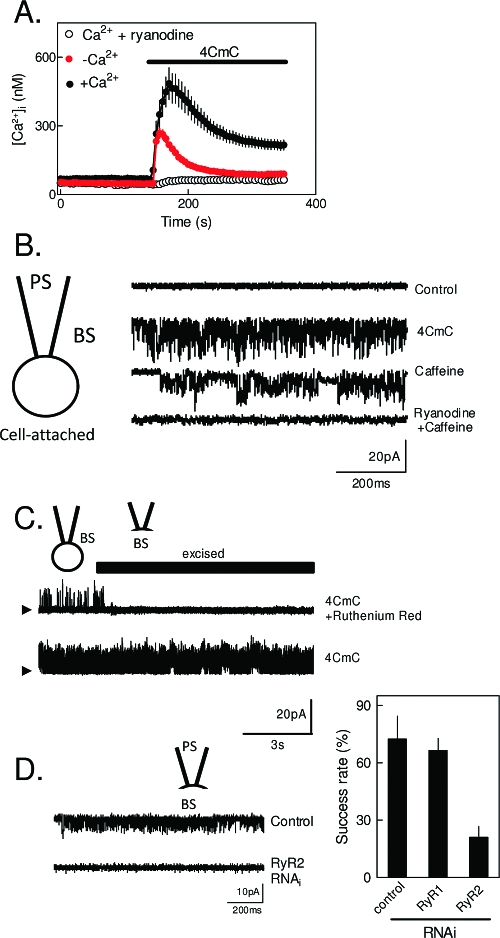Figure 4.
Functional ryanodine receptors in the plasma membrane of RINm5F insulinoma cells. (A) Ca2+ signals evoked in populations of cells by 4CmC (1 mM) with or without prior treatment with ryanodine (400 μM) and in either normal or Ca2+-free medium. The results are consistent with activation of RyR causing both Ca2+ release and Ca2+ entry. (B) Cell-attached recordings from cells with cesium methanesulfonate in both bathing (BS) and pipette (PS) solutions at a holding potential of −100 mV. Caffeine (1 mM), 4CmC (1 mM), or ryanodine (400 μM) was included in BS as indicated. Arrowheads denote the closed state. (C) 4CmC activates channels in the cell-attached mode, which are then rapidly inhibited when the patch is excised into BS containing the membrane-impermeant inhibitor of RyR, ruthenium red (10 μM). (D) Selective inhibition of RyR2 expression using RNAi attenuates the electrical activity evoked by 4CmC. Typical records for control and RyR2-RNAi-treated cells are shown, and the success rate for detecting 4CmC-activated channels in the PM is shown for mock-transfected cells or cells transfected with RNAi for RyR1 or RyR2. Reproduced with permission from ref (185). Copyright 2009. American Society for Biochemistry and Molecular Biology.

